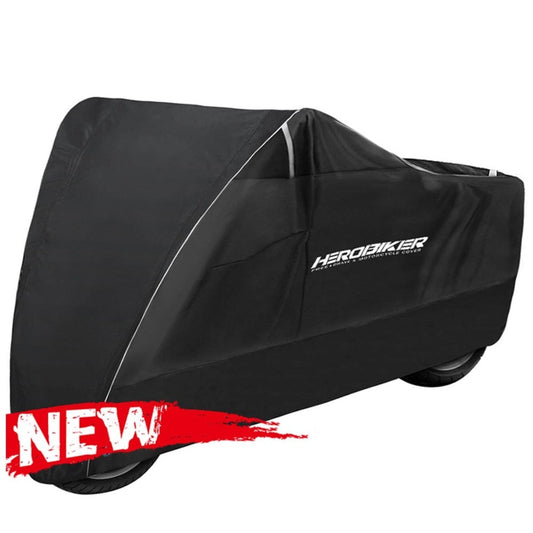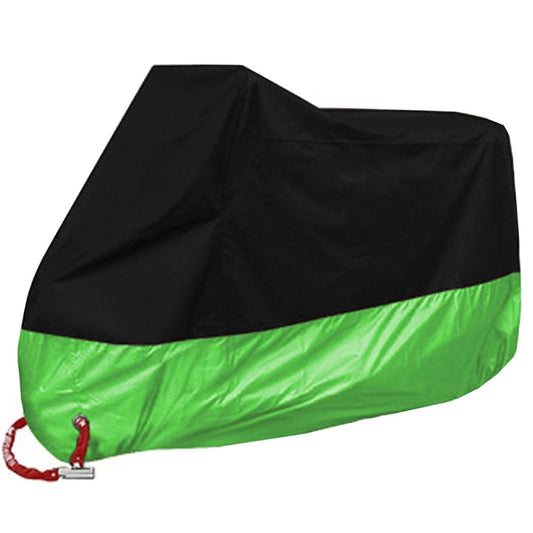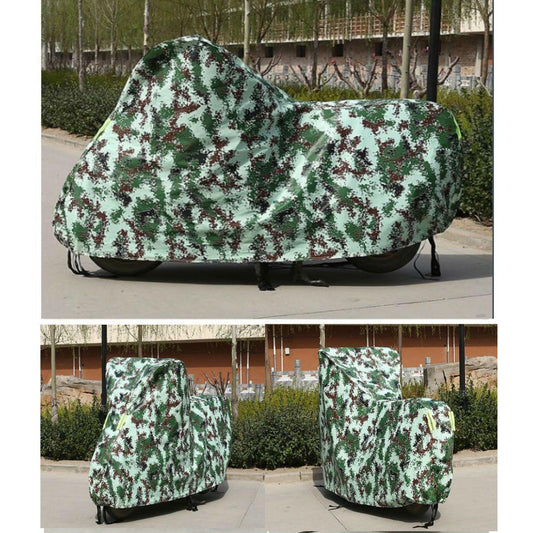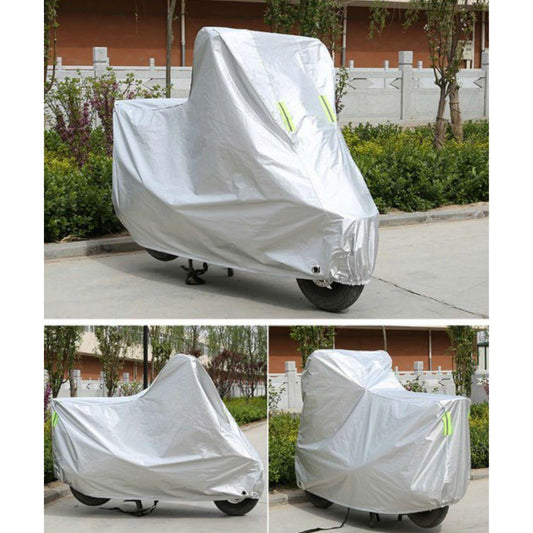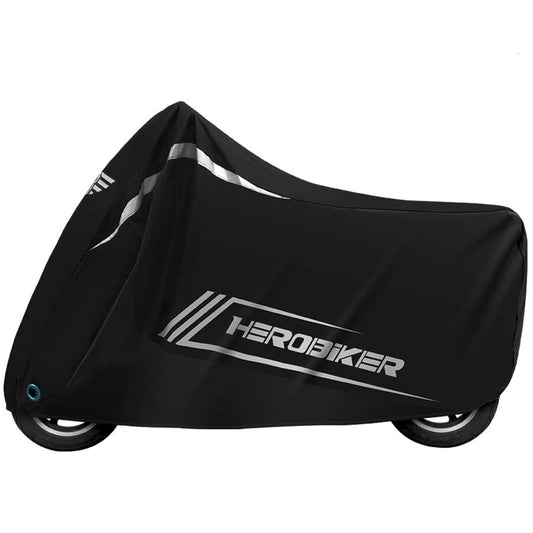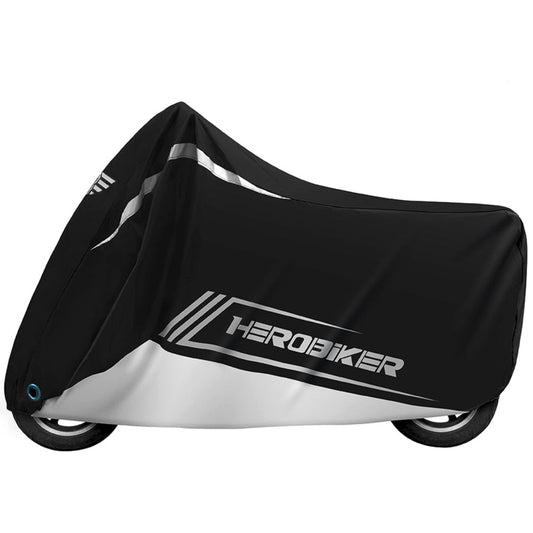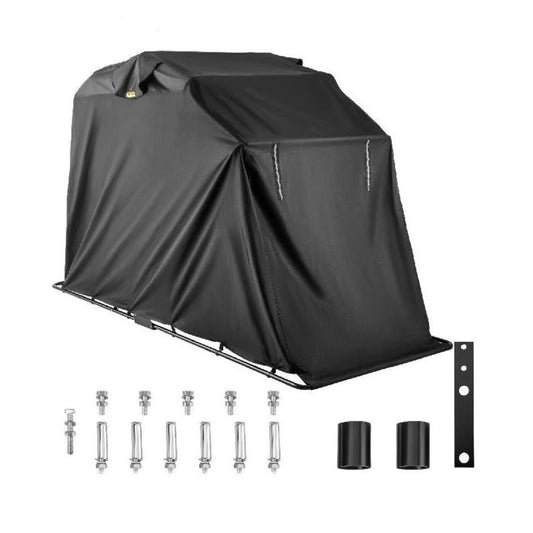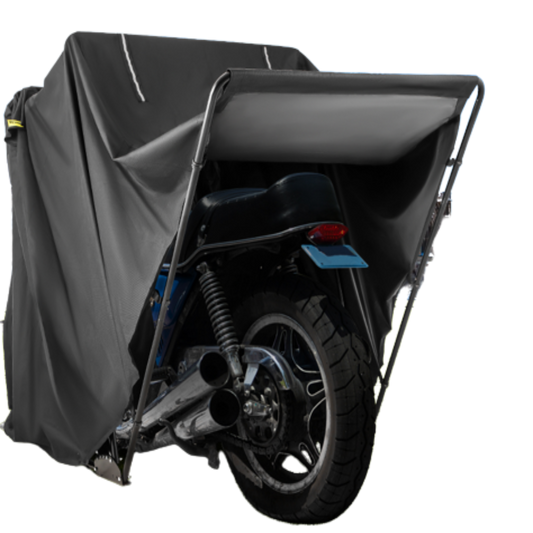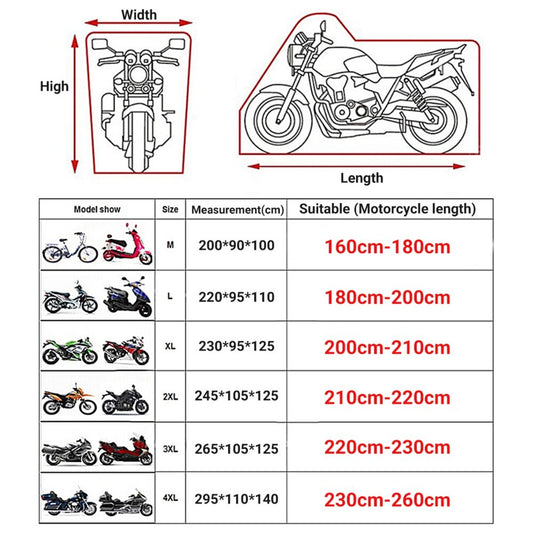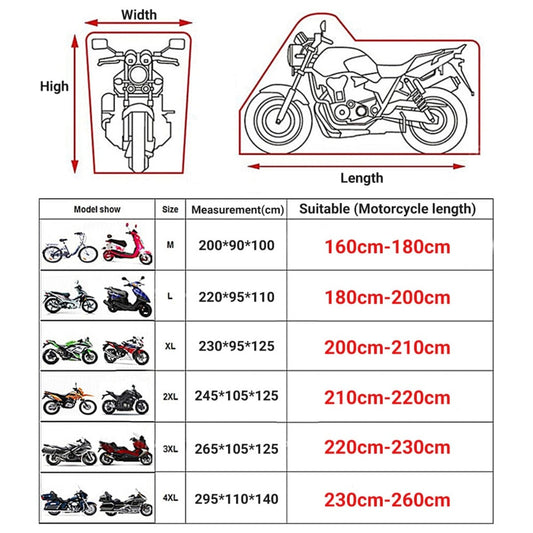-
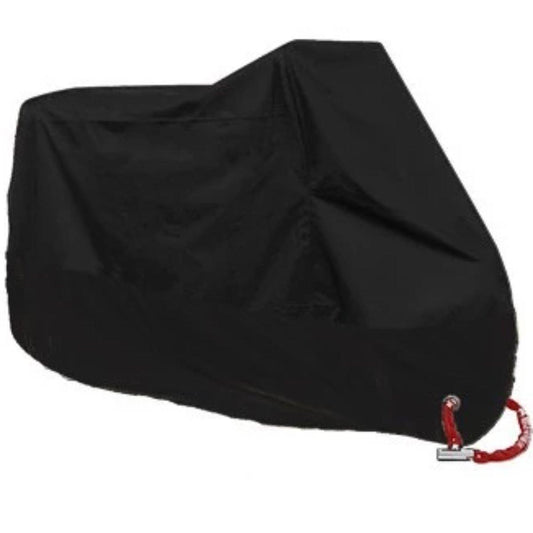
 SAVE 51%
SAVE 51%Waterproof Motorcycle Cover
Regular price From $48.95Regular price From $48.95 Sale priceUnit price per$99.9551% -
Waterproof Protective Motorcycle Cover
Regular price From $69.95Regular price From $69.95 Sale priceUnit price per$198.9564% -
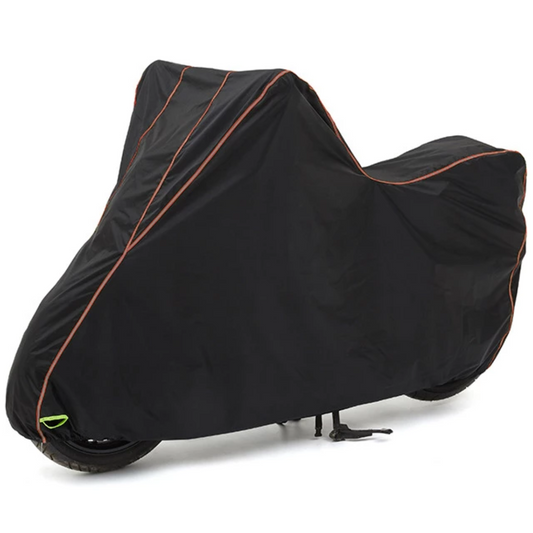
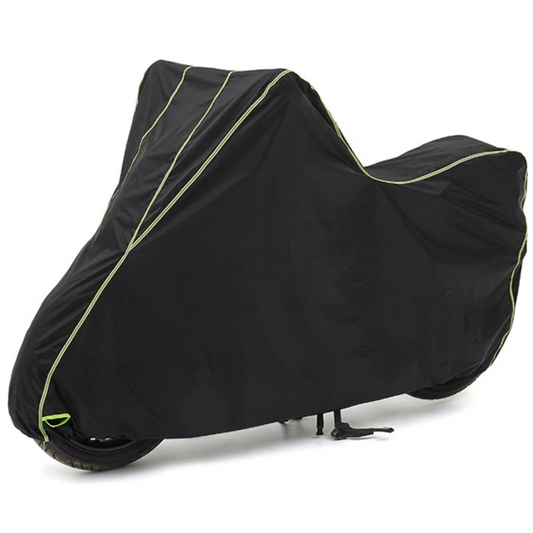 SAVE 37%
SAVE 37%Outdoor Protective Motorcycle Cover
Regular price From $77.95Regular price From $77.95 Sale priceUnit price per$124.9537% -
Protective Oxford Cloth Motorcycle Cover
Regular price From $32.95Regular price From $32.95 Sale priceUnit price per$59.9545% -
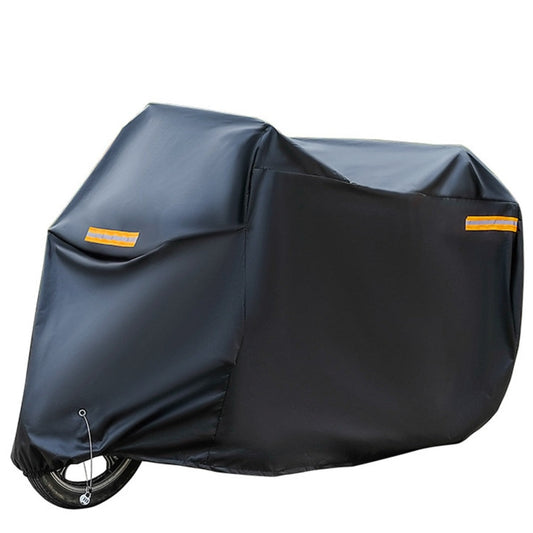
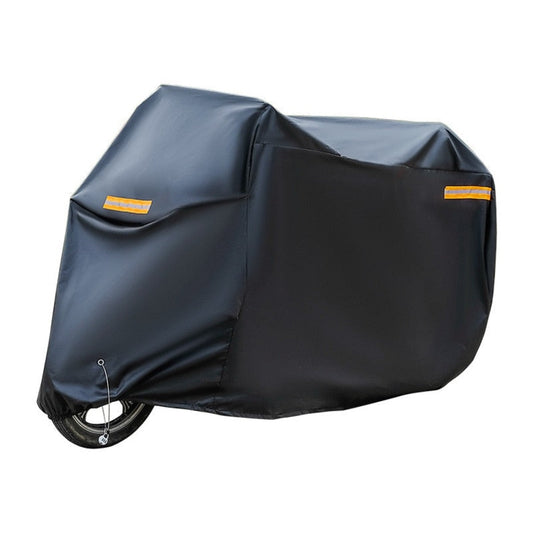 SAVE 28%
SAVE 28%Reflective Sunshade Motorcycle Cover
Regular price From $62.95Regular price From $62.95 Sale priceUnit price per$87.9528% -
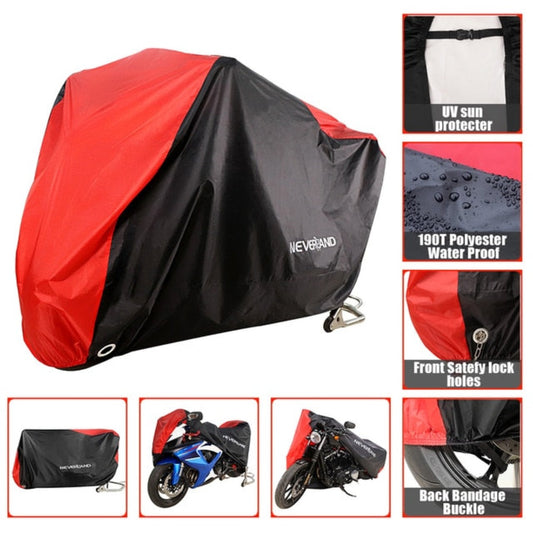
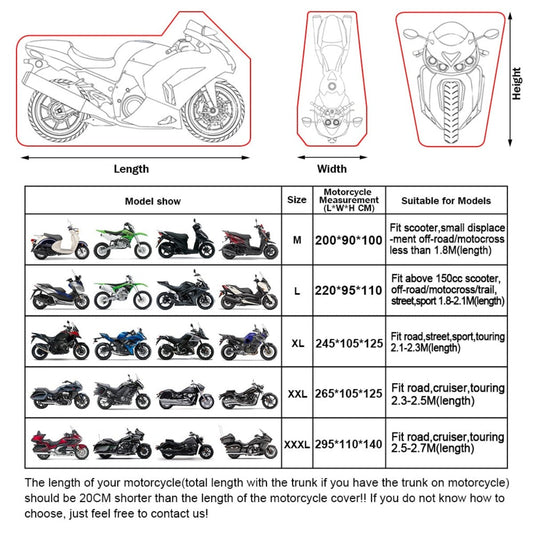 SAVE 29%
SAVE 29%Sun Protector Motorcycle Cover - Red
Regular price From $59.95Regular price From $59.95 Sale priceUnit price per$84.9529% -
Sun Protector Motorcycle Cover - Orange
Regular price From $59.95Regular price From $59.95 Sale priceUnit price per$84.9529% -
All Season Protective Motorcycle Cover - Black
Regular price From $64.95Regular price From $64.95 Sale priceUnit price per$90.9528% -
All Season Protective Motorcycle Cover - Silver
Regular price From $64.95Regular price From $64.95 Sale priceUnit price per$90.9528% -
Waterproof Motorcycle Cover Protective Shelter
Regular price $334.95Regular price $334.95 Sale priceUnit price per$369.95Sold out -
Sun Protector Motorcycle Cover - Yellow
Regular price From $64.95Regular price From $64.95 Sale priceUnit price per$94.95Sold out -
All Season Protective Motorcycle Cover - Camouflage
Regular price From $64.95Regular price From $64.95 Sale priceUnit price per$90.9528% -
All Season Protective Motorcycle Cover - Red
Regular price From $64.95Regular price From $64.95 Sale priceUnit price per$90.95Sold out
What is the best motorcycle cover?
Finding the best motorcycle cover can be hard and daunting. There are literally hundreds of motorcycle covers tents out there promising to meet your needs. While the market is vast and wide, not all covers are made equal.
When looking for the best motorcycle covers, you need to consider the quality and cost. Also, consider whether you are looking for an outdoor motorcycle cover waterproof or an indoor motorcycle cover. You want a motorcycle cover that is waterproof and able to protect your motorcycle even when it’s parked outside. By any form of imagination, it is not hard to find a motorcycle cover that can protect your bike, but there are a few things you need to keep an eye on when going to shop for one. A great cover is superior to just any cheap throw rug that you can use to cover your motorcycle.
Key features to look out for
A motorcycle cover will protect your bike from bad weather conditions and save you tons of space if you do not have room in your garage as you can simply park your bike mots. It also ensures that your bike does not get scratched or dented when parked outdoors or indoors. If you are tired of washing your bike all the time, then a cover might be just what you need to keep your bike clean when you are not using it. Choosing the right motorcycle cover is, therefore, an important task that you should consider carefully. Here is what you need to look out for when buying a motorcycle cover.
What material is the motorcycle cover made from?
The material combinations of your motorcycle cover will have a huge impact on how effective it’s going to be. Ideally, the primary material from which the cover is made should be waterproof material. The most common waterproof material choices include nylon, polyester, and polyurethane. If you are looking for a cover that is both waterproof and breathable, you can begin to look at the possible combinations that exist. A breathable cover will allow ample airflow while providing waterproofing capabilities for outdoor use. Unfortunately, many motorcycle cover manufacturers out there do not disclose the types of fabrics used to make their covers or waterproofing methods that they use. As a result, it can be hard to take a fine guess about the cover that you want to buy.
When choosing your next motorcycle cover, ensure that it is a breathable waterproof motorcycle cover. This helps in that, motorcycle tarps tend to trap a lot of moisture and humidity during summer and after the rains. The condensed drops can cause some real issues with your bike. Creating vents in the cover can help solve the condensation problem. If the cover is made from breathable fabric, then the humidity issue will be easily solved.
Some materials such as polyester are very common. Polyester is a lightweight material that can be painted in many coatings that boost waterproofing capabilities. This is why it is a common material when it comes to the construction of motorcycle covers. It can also be weaved with thicker materials that enhance durability and effectiveness.
Nylon is another great material that can be combined together with other fabrics to create the perfect cover. It is usually much stronger than polyester and tougher against abrasion. Most popular covers have nylon edges that are important for reducing abrasion and keeping the whole tarp intact. During windy situations, abrasion tends to be high which can damage the cover’s material. Reinforcing with nylon gives the cover a better chance to withstand wear and tear while providing superb protection to your motorcycle. Depending on how the materials are woven together, nylon can be better at waterproofing than even polyester. It has pretty much the same qualities as polyester albeit it is heavier.
Another popular material used in the construction of your motorcycle cover is PU (Polyurethane). PU, as it’s often referred to, is a synthetic fabric that is mainly used to achieve waterproofing. However, it is prone to ultraviolet degradation which reduces its ability to protect your motorcycle from harsh outdoor conditions. It can be made more robust by using certain pigments and chemicals for UV blocking. There are high chances that your manufacturer will not expressly disclose to you whether motorcycle canvas contains PU and that it is reinforced to withstand UV radiation. The only problem with canvases made out of PU, or containing PU is that they will begin to degrade as soon as they are exposed to the sun’s radiation for long enough. This is despite them being highly waterproof.
The upper construction of motorcycle cover
When shopping for the best covers online, you should consider the cover’s upper features. This is perhaps the most overlooked aspect of a motorcycle cover and one that you should look at carefully. When looking around, ensure that the cover is well-formed to provide protection to the motorcycle mirrors and areas around the handlebar. For most bikes, these are the highest points that stick out unless your bike has a windscreen. The motorcycle cover should have reinforced ridgelines along these areas which are usually exposed to higher abrasions and wear and tear. If the cover’s material does not have reinforcement, it will eventually begin to break and come off. So if you are looking for a sturdy motorcycle tarp, ensure that these high impact areas are well reinforced with materials such as nylon.
Ventilated covers
Air should be able to circulate out of the cover and prevent condensation from taking place inside. Look for openable vents that are also waterproof. Waterproof motorcycle covers tend to capture moisture over your bike which then condenses and forms water drops. These drops can cause your bike to rust and make your bike just as wet as if you’d left your bike unprotected in the rain.
The placement of the vents should be at the top of the cover for optimum air circulation. Even with proper vents, you will still need to take off the cover sometimes after rain for it to dry out. This practice will ensure that any trapped moisture is eliminated before putting it back on.
The lower construction
Over time, the lower part of your cover will be exposed to abrasive destruction, wind and other elements that accelerate the destruction. For this reason, the lower construction of your bike cover should be reinforced on the lower skirt with durable nylon. You also want grommets along the lower edges for proper fastening of the bike cover. The grommets will provide you with locations for running a rope or lock that keeps the motorcycle cover secure. It will also keep it in place during wind storms and even prevent theft. You don’t need a complex mechanism to hold down your cover as a rope will do a good job.
For the front and rear wheels, you may consider using elastic hooks to keep them covered adequately. These are nice for keeping the fabric in place during severe wind storms that may threaten to blow the cover away.
How to measure a motorcycle cover
Sizing your motorcycle cover is the next step that you have to keep in mind when looking for the perfect cover. In most cases, motorcycle covers are made to fit a maximum of two bike sizes. So the difference between the various sizes can dictate how effective it’s going to be for protecting your bike. For example, the cover size for a tall bike like the BMW GS is different from that of a normal cruiser bike.
Another factor to keep in mind is the width of the bike. For example, a touring bike with panniers and tail bags will be considerably wider than if it didn’t have the extra features. The cover will barely fit when you try to put it on with the two side bags loaded. So, consider the widest configuration possible so you have enough room to cover the extra bags and accessories. As far as size goes, the width and height of the cover will determine how well you are able to cover your bike. Different types of bikes will require different sizes. Generally, sportbikes do not require a large canvas while cruisers without a large windscreen also don’t need a large cover. However, a touring bike will more often require a large cover especially with the large bags mounted on.
How to cover your motorcycle
To properly cover and secure your motorcycle, locate the front tag off the cover. Begin by placing the cover on the front position with the vent position over the seat. Then starting in the front wheel area pull the motorcycle cover over the windshield and tuck the elastic hem over the center of the wheel. Then working towards the rear of the motorcycle, pull the motorcycle tarp down the sides avoiding any wrinkles or snake points. The cover should be long enough to allow the elastic hem to fold below the centerline of the rear wheel and have a tight fit along the perimeter. Most notably, you should avoid placing material that is not heat shielded against hot pipes as melting or burning may occur. Use the provided grommets to securely lock the cover under the motorcycle. Most covers include a belly strap located at the base that to help avoid the cover from blowing off if exposed to windy outdoor conditions.
Can you put a motorcycle cover on a hot bike?
It is wise to wait until your bike cools down before putting a motorcycle cover on. Ideally, you should wait for about 2 hours for the safest time to cover your bike. If your cover is heat resistant, then you might not need to wait until the bike is stone-cold for you to cover it. The danger of putting a cover on a hot motorcycle is that the hot exhaust could create a hole through the cover and damage it. Even worse is when the plastic melts over the bike.
What are the different types of covers?
Generally speaking, the different types of covers are full covers and motorcycle half covers.
Full-size covers are made to cover the entire width, breadth, and height of the motorcycle. This includes handlebars, wheels, tires, mirrors, and panniers. Most covers you will find are full-size covers and waterproof. A critical feature with full-size motorcycle covers is their ability to protect all the major components of the bike and have air vents to prevent condensation.
Motorcycle half covers, as the name implies, cover only half the bike especially the upper half. This includes the gas tank area, seat, and handlebars. While half covers provide protection to the upper half, they can still block UV radiation and be waterproof. The only advantage over the full cover is that they are typically lightweight and more portable.
Other considerations
When you park your motorcycle outside, you want a cover that will be visible at night. For this reason, covers that have reflective strips are best. They will make your bike more visible to pedestrians and other vehicles and prevent them from accidentally hitting your bike when parked.
Care and Cleaning
The care and cleaning of your cover will ensure that it lasts long and protects your bike better. Cleaning and maintenance are generally easy and straightforward. Clean your cover off with a brush or a soft terry cloth. Alternatively, you can use warm water and a mild detergent to clean the cover. Finally, ensure that the cover is thoroughly cleaned before using or storing for storage.
Enjoy up to 15% OFF when you shop at American Legend Rider, with quality guaranteed.



